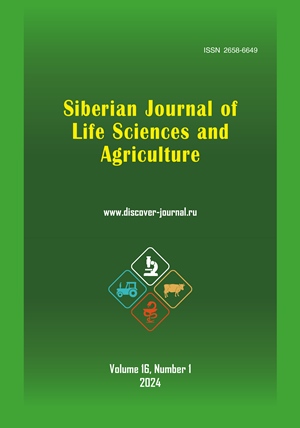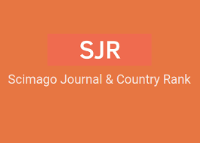THE INFLUENCE OF RHIZOBACTERIA ON SOME SECONDARY METABOLITES OF FERULA: A REVIEW
Аннотация
Ferula L. plants are of great importance in a number of fields such as agriculture, veterinary, medicine and food industry. Medicinal properties of Ferula L. species are explained by the variety of secondary metabolites they produce, in which the activity of root rhizobacteria occupies a special place.
This article presents the research-based analysis of some biological properties, agrotechnology, secondary metabolites (ferulin A,D; diversolid A,D,F,G; kuhistanicaol A,B,C,D,G; kuhistanol (A-H); fucanefuromarin (A-G); fucanemarin A,B; fesumtuorin (A-H); ferulagol A,B; pallidon (A-F); sinkiangenorin D and others) of the species of genus Ferula L., the influence of the microbial communities (new species belonging to the genera Porphyrobacter, Paracoccus and Amycolatopsis, as well as Actinobacteria, Acidobacteria, Proteobacteria, Gemmatimonadet and Bacteroides) living in the roots of Ferula L. on the synthesis of some secondary metabolites of the plant, based on scientific sources.
Скачивания
Литература
Abdulmyanova L.I., Fayzieva F.K., Ruzieva D.M., Karimov F.A. Antimicrobial activity of endophytic fungi from Ferula foetida. International Journal of Current Microbiology and Applied Sciences, 2015, vol. 4(11), pp. 154-159.
Ahmadzadeh M., Keshtkar A.H., Moslemkhany·K., Ahmadzadeh M. Effect of the plant probiotic bacteria on terpenoid indole alkaloid biosynthesis pathway gene expression profiling, vinblastine and vincristine content in the root of Catharanthus roseus. Molecular Biology Reports, 2022, vol. 49, pp. 10357-10365. https://doi.org/10.1007/s11033-022-07841-z
Akhmedov E.T., Berdiev E.T., Kholmurotov M.Z., Ulashev B. Ferula assa-faetida L. is a medicinal plant of the forest. Bulletin of Agrarian Science of Uzbekistan, 2019, vol. 3 (77), pp. 151-153.
Allayarov M.U., Mamatkarimov A.I., Idriskhodjaev U.M. Methodological guide on the technology of cultivation and raw material preparation of Ferula L. plant. 2018, 12 p.
Anonymous Asafoetida, Retrieved on November 15 2020. https://innovativeagriculture.in/horticulture/spices/ asafoetida/
Asilbekova D.T., Ozek G., Ozek T., Bobakulov Kh. M., et al. Essential oil and lipids from leaves of Ferula kuhistanica. Chemistry of Natural Compounds, 2019, vol. 55, no. 6, pp. 993-998. https://doi.org/10.1007/s10600-019-02877-3
Avalbaev O.N., Yunusov H.A., Doniyorova Sh.O. Seed germination of Ferula L. species. Proceedings of the republican scientific conference on the topic "Prospects of the development of Biology in the 21st century and the importance of innovations in them". 2021, 498 p.
Avalbaev O.H. Bioecology of Ferula L. species of the Western Pamir-Aloy range and improvement of their rational use methods. Dissertation of Doctor of Philosophy (PhD) on Biological Sciences. 2020, 120 p.
Azizov D.Z., Rakhmanberdieva R.K., Elova H.A. Polysaccharides from roots of Ferula tenuisecta and their antimicrobial activity. Chemistry of Natural Compounds, 2022, vol. 58, no. 4, pp. 589-592. https://doi.org/10.1007/s10600-022-03747-1
Babekov A.U., Saidkhodzhayev A.I., Keneshov B.M. Esters of Ferula kuhistanica. Chemistry of Natural Compounds, 2000, vol. 36, no. 2, pp. 219-219.
Cappellari L.R., Santoro M.V., Schmidt A., Gershenzon J.et al. Improving phenolic total content and monoterpene in Mentha x piperita by using salicylic acid or methyl jasmonate combined with rhizobacteria inoculation. Int. J. Mol. Sci., 2020, vol. 21(1), 50. https://doi.org/10.3390/ijms21010050
Carlson R., Tugizimana F., Steenkamp P.A., Dubery I.A. et al. Rhizobacteria-induced systemic tolerance against drought stress in Sorghum bicolor (L.). Moench. Microbiological Research, 2019, vol. 232, 126388, PII: S0944-5013(19)30837-7. https://doi.org/10.1016/j.micres.2019.126388
Chen B., Kawazoe K., Takaishi Yo., Honda G., et al. Prenylated benzoic acid derivatives from Ferula kuhistanica. J. Nat. Prod., 2000, vol. 63, pp. 362-365.
Chen B., Teranishi R., Kawazoe K., Takaishi Y, et al. Sesquiterpenoids from Ferula kuhistanica. Phytochemistry, 2000, vol. 54, no. 7, pp. 717-722. PII: S0031-9422(00)00197-7
Hadi N., Omidbaigi R., Moieni A., Responses of zygotic embryos of galbanum (Ferula gummosa Boiss.) in in vitro conditions. Basic Research Journal of Agricultural Science and Review, 2015, vol. 4(2), pp. 049-055.
Hassani B., Saboora A., Radjabian T., and Fallah Husseini H. Effects of temperature, GA3 and Cytokinins on breaking seed dormancy of Ferula assa-foetida L. Iranian Journal of Science and Technology (Sciences), 2009, vol. 33 (1), pp. 75-85.
Hassani B., Saboora A., Radjabian T., Fallah Husseini H. Somatic Embryogenesis of Ferula assa-foetida. Journal of Science/University of Tehran, 2008, vol. 33(4), pp. 15-23.
Hoseinpour, F., & Lorigooini, Z. Botany, secondary metabolites, therapeutic effects and toxicity of Ferula persica: A review. Journal of Medicinal Herbs, 2023, vol. 13(4), pp. 1-15.
Ibrahim A., Shahid A. A., Noreen S., Ahmad A., Physiological changes against Meloidogyne incognita in rhizobacterial treated eggplant under organic conditions The Journal of Animal & Plant Sciences, 2016, vol. 26(3), pp. 805-813.
Iranshahi M., Mojarab M., Sadeghian H., Hanafi-Bojd M.Ya. Polar secondary metabolites of Ferula persica roots. Phytochemistry, 2008, vol. 69, pp. 473-478. https://doi.org/10.1016/j.phytochem.2007.08.001
Shamsiddin S., Zulayho Y. The Genus Ferula L. in the Flora of Jizzakh Region. International Journal of Biological Engineering and Agriculture, 2022, vol. 1(5), pp. 36-40. https://doi.org/10.51699/ijbea.v1i5.382
Khadka D., Pandey K. Exploring the crucial role of Plant Growth-Promoting Rhizobacteria (PGPR) in plant secondary metabolite production and diabetes management. Antifungal metabolites of rhizobacteria for sustainable agriculture. Springer, 2022, pp. 351-373.
KhalifaevD.P., SharopovF.S., Safomuddin A., Numonov S. et al. Chemical composition of the essential oil from the roots of Ferula kuhistanica growing wild in Tajikistan. Natural product communications, 2018, vol. 13(2), pp. 219-222.
Khalilova E.Kh., Bobakulov Kh.M., Aripova S.F., Abdullaev N.D. Secondary metabolites of Ferula foetida. Chemistry of Natural Compounds, 2013, vol. 49, no. 1, pp. 141-142.
Khalkuzieva M. Rakhmonkulov U. Morphology and Germination Biology of the Seeds of Ferula foetida (Bunge) Regel.) and F. tadshikorum (Pimen)). Scientific Bulletin of Namangan State University, 2020, no. 4, pp. 69-73.
Khalkuzieva M.A. Biomorphological characteristics of resine-bearing Ferula tadshicorum Pimenov and Ferula foetida (Bunge) Regel and prospects for establishing their plantations in Uzbekistan. Dissertation of Doctor of Philosophy (PhD) on Biological Sciences. 2022, 124 p.
Khamraeva D., Khojimatov O., Uralov A. Growth and development of Ferula tadshikorum Pimenov in culture. Acta Biologica Sibirica, 2019, vol. 5(3), pp. 172-177. https://doi.org/10.14258/abs.v5.i3.6588
Khazaei A., Bahramnejad B., Mozafari A.A., Dastan D. Hairy root induction and Farnesiferol B production of endemic medicinal plant Ferula pseudalliacea. 3 Biotech, 2019, vol. 9, 407. https://doi.org/10.1007/s13205-019-1935-x
Khojimatov O.K., Bussmann R.W., Khamraeva D.T. Some aspects of morphobiology, conservation of resource potential, crop cultivation and harvesting of raw materials of promising Ferula species. Ethnobotany Research and Applications, 2021, vol. 22, pp. 1-8. http://dx.doi.org/10.32859/era.22.31.1-8
Koorki Z., Shahidi-Noghabi Sh., Smagghe·G., Mahdian K. Insecticidal activity of the essential oils from yarrow (Achillea wilhelmsii L.) and sweet asafetida (Ferula assa-foetida L.) against Aphis gossypii Glover. (Hemiptera: Aphididae) under controlled laboratory conditions. International Journal of Tropical Insect Science, 2022, vol. 42(4), pp. 2827-2833. https://doi.org/10.1007/s42690-022-00766-x
Korovin E.P. Illustrative monograph of the genus Ferula L. (Tourn.). Tashkent, 1947, 93 p.
Korovin E.P. Genus Ferula L. Flora of the USSR. Ed. Academy of Sciences of the USSR. M. L.1951, no. 17, pp. 62-155.
Korovin S.E. On some anthropogenic changes in the cover of the western Tien Shan Botan. Journal of Botany, 1969, vol. 44, no. 4, pp. 475-482.
Kurmukov A.G., Akhmedkhodzhaeva Kh.S. Estrogen drugs from plants of the genus Ferula . Ibn Sino Publishing and Printing Association. Tashkent, 1994, 69 p.
Liu Y, Guo J, Li Li, Mipeshwaree D. A. et al. Endophytic bacteria associated with endangered plant Ferula sinkiangensis K. M. Shen in an arid land: diversity and plant growth-promoting traits. J Arid Land., 2017, vol. 9(3), pp. 432-445. https://doi.org/10.1007/s40333-017-0015-5
Liu Y.H., Guo J.W., Salam N., Zhang Yo.G., et al. Culturable endophytic bacteria associated with medicinal plant Ferula songorica: molecular phylogeny, distribution and screening for industrially important traits. 3 Biotech, 2016, vol. 6, pp. 1-9. https://doi.org/10.1007/s13205-016-0522-7
Lucy M., Reed E and Glick B.R. Applications of free living plant growth-promoting rhizobacteria. Antonie van Leeuwenhoek, 2004, vol. 86, pp. 1-25.
Melibaev S. Biology and resources of Ferula tenusecta and Ferula kuhistanica - sources of estrogen drugs: Abstract of the dissertation for obtaining the degree of candidate of biological sciences. Tashkent, 1985, 131 p.
Mohammadhosseini M., Venditti A., Sarker S.D., Nahar L. et al. The genus Ferula: Ethnobotany, phytochemistry and bioactivities: A review. Industrial crops and products, 2019, vol. 129, pp. 350-394.
Mostafavi K. Inhibitory effects of aqueous extracts of Ferula gummosa Boiss. (Galbanum) on germination and growth of some weeds. International journal of Agronomy and Plant Production, 2010, vol. 1 (4), pp. 147-154.
Mukumov I.U., Normukhammedova F.Sh. Ferula kuhistanica Korov. in the Samarkand region (chemical composition and reserves). Bulletin of Science, 2019, vol. 1, no. 6 (15), pp. 73-77.
Nadjafi F., Bannayan M., Tabrizi L and Rastgoo M. Seed germination and dormancy breaking techniques for Ferula gummosa and Teucrium polium. Journal of Arid Environments, 2006, vol. 64, pp. 542-547. https://doi.org/10.1016/j.jaridenv.2005.06.009
Nazhimitdinova N. N. Phytochemical study of plant roots Ferula tatarica fish.ex spreng. and Ferula soongorica pall.ex spreng. Thesis for obtaining the degree of Candidate of Pharmaceutical Sciences. Tashkent, 2007, p. 129.
Nazrullaev S.S., Khushbaktova Z.A., Syrov V.N. The estrogen activity of the sum of terpenoid alcohol esters isolated from Ferula kuhistanica and Ferula tenuifida. Pharmaceutical Chemistry Journal, 2000, vol. 34, no. 10, pp. 25-27.
Nikolaeva M.G. On the biology of germination of some species of Ferula L. Experimental botany. M. L., 1948, vol. 6. p. 228.
Nikonov G.K. The structure of mogoltine-coumarin in the roots of Peucedanum mogoltavicum. Chem. connect., 1971, no. 5, pp. 572-576.
Nishanbayeva H.A. Genus Ferula L. in the vegetation cover in the flora of Uzbekistan: Abstract of the dissertation for obtaining the degree of candidate of biological sciences. Tashkent, 1972, 22 p.
Otroshy M., Zamani A., Khodambashi M., Ebrahimi M., and Struik P.C. Effect of exogenous hormones and chilling on dormancy breaking of seeds of Asafoetida (Ferula assa - foetida L.). Research Journal of Seed Science, 2009, vol. 2(1), pp. 9-15.
Pangesti N., Weldegergis B.T., Langendorf B., van Loon J.J.A., et al. Rhizobacterial colonization of roots modulates plant volatile emission and enhances the attraction of a parasitoid wasp to host‑infested plants. Oecologia, 2015, vol. 178, pp. 1169-1180. https://doi.org/10.1007/s00442-015-3277-7
Pimenov M.G. Family Umbelliferae. Key to plants of Central Asia. Tashkent, 1983. Vol. 7. P. 276-313.
Pimenov M.G., Baranova Y.V. A new species of the genus Ferula L. from South Kazakhstan. Bull. Goab. Bot. Garden, 1977, pp. 43-45.
Popova O.A., Bunyatyan N.D., Bobizoda G.M., Remezova I.P. et al. Standardization of a formulation of timogar and Ferula assa-foetida dry resin extract and its biological activity. Pharmaceutical Chemistry Journal, 2021, vol. 55, no. 8, pp. 34-39. https://doi.org/10.1007/s11094-021-02495-w
Rakhmonkulov U., Avalboyev O.N. Ferulas of Uzbekistan (monograph) Publishing House "Fan and Technology". Tashkent, 2016, 62 p.
Rakhmankulov U. Terpenoid-containing plants of the Western Tien Shan and their use: Abstract of the dissertation for obtaining the degree of candidate of biological sciences. Tashkent, 1999, 43 p.
Rakhmonkulov U., Khalkuzieva M.A., The latent period of the species Ferula tadshicorum Pimenov and Ferula foetida (Bunge) Regel. Proceedings of the republican scientific conference on the topic "Prospects of the development of Biology in the 21st century and the importance of innovations in them". 2021, 498 p.
Rakhmonov X.C. Biology and resources of Ferula tadshikorum M. Pimen. in southern Tajikistan. Dissertation for obtaining the degree of candidate of agricultural sciences. 2017. 179 p.
Reza P.M., Moghaddam M. and Yazdani N. The effect of different irrigation treatments on resin yield, essential oil content, morphological traits and survival of better asafoetida (Ferula asafoetida L.). Journal of Rangeland and watershed management, 2015, vol. 68(1), pp. 25-34. https://doi.org/10.22059/jrwm.2015.53876
Saidkhodzhaev A.I. Terpenoid plants of the genus Ferula: Abstract of the dissertation for obtaining the degree of candidate of biological sciences. Tashkent, 1985, 126 p.
Saidkhodzhayev A.I., Nikonov G.K. Esters of the roots of Ferula kuhistanica. Plenum Publishing Corparation, 1974, vol. 227, pp. 525- 526.
Salam N., Asem M.D., Liu Y.H., Xiao M. et al. Endophytic Microbial Diversity in the Halophytic Medicinal Plant Ferula and Their Bioapplicable Traits / Egamberdieva, D., Tiezzi, A. (eds). Medically Important Plant Biomes: Source of Secondary Metabolites, 2019, vol. 15, pp. 265-276. https://doi.org/10.1007/978-981-13-9566-6_11
Salehi M., Naghavi M.R., Bahmankar M. A review of Ferula species: Biochemical characteristics, pharmaceutical and industrial applications, and suggestions for biotechnologists. Industrial Crops and Products, 2019, vol. 139, 111511. https://doi.org/10.1016/j.indcrop.2019.111511
Salimova D., Khujanov A., Ferula L. the importance of generations in folk medicine. Academic research in educational sciences, 2021, vol. 2, pp. 38-44.
Santoyo G, Moreno-Hagelsieb G, del Carment Orozco-Mosqueda M, Glick BR Plant growth-promoting bacterial endophytes. Microbiol Res., 2016, vol. 183, pp. 92-99.
Shah N.C. Heeng (Asafoetida): An Exotic Condiment and Traditional Medicine of India. Asian Agri – History, 2019, vol. 23, no. 2, pp. 133-145.
Sood R. Asafoetida (Ferula asafoetida): A high-value crop suitable for the cold desert of Himachal Pradesh, India. Journal of Applied and Natural Science, 2020, vol. 12(4), pp. 607-617. https://doi.org/10.31018/jans.v12i4.2418
Sun L., Shi S.B., Zhu J., Li X.J. Traditional use and modern research review of Ferula in China. Mod Chinese Med., 2013, vol. 15, pp. 620-626.
Swargiary G., Rawal M., Singh M., Mani Sh. Molecular approaches to screen bioactive compounds from medicinal plants. Plant-derived bioactives production, properties and therapeutic applications. Springer Nature Singapore, 2020, pp. 1-32.
Tamemoto K., Takaishi Yo., Chen B., Kawazoe K. et al. Sesquiterpenoids from the fruits of Ferula kuhistanica and antibacterial activity of the constituents of F. kuhistanica. Phytochemistry, 2001, vol. 58, pp. 763-767. PII: S0031-9422(01)00307-7.
Turginov O., Djamalova D., Batoshov A., Aminova M. Endemic species of the genus Ferula L. (Apiaceae) in flora of Uzbekistan. Scientific Bulletin of Namangan State University, 2019, vol 1, issue 2, pp. 46-57.
Upadhyay, P.K., Singh, S. Agarwal, G. and Vishwakarma, V.K. Pharmacological activities and therapeutic uses of resins obtained from Ferula asafoetida Linn.: A review. International Journal of Green Pharmacy, 2017, vol. 11(2), pp. 240-247.
Vinogradova V.M. Genus Ferula L. (Apiaceae) in Central Asia. System News high rast. L., 1990, no. 27, pp. 113-120.
Wang X., Wang Z., Jiang P., He Y. et al. Bacterial diversity and community structure in the rhizosphere of four Ferula species. Scientific Reports, 2018, vol. 8(1), pp. 1-10. https://doi.org/10.1038/s41598-018-22802-y
Xing Y., Li N., Zhou D., Chen G. et al. Sesquiterpene coumarins from Ferula sinkiangensis act as neuroinflammation inhibitors. Planta Med., 2017, vol. 83, pp. 135-142.
Yaqoob Ubaid and Nawchoo, Irshad Ahmad. Distribution and Taxonomy of Ferula L: A Review. Research & Reviews: Journal of Botany, 2016, vol. 5(3), pp. 15-23.
Yaqoob, U., Nawchoo, I.A. Conservation and Cultivation of Ferula jaeschkeana Vatke: A species with deep complex morphophysiological dormancy. Proc. Natl. Acad. Sci. India Sect. B - Biol. Sci., 2017, vol. 87, pp. 315-325.
Yusupov O.Sh Effect of Ferula assofoetida plant on the organism of Karakol sheep. Dissertation of Doctor of Philosophy (PhD) on Veterinary Sciences. 2020, 45 p.
Zehra A., Choudhary S., Naeem M., Masroor M. et al. A review of medicinal and aromatic plants and their secondary metabolites status under abiotic stress. Journal of Medicinal Plants Studies, 2019, vol. 7(3), pp. 99-106.
Zhang T., Wang Z., Xinhua Lv., Dang H. et al. Variation of rhizosphere bacterial community diversity in the desert ephemeral plant Ferula sinkiangensis across environmental gradients. Scientific Reports, 2020, vol. 10(1), 18442. https://doi.org/10.1038/s41598-020-75591-8
Zhu, J., Sun, L., Fan, C. and Li, X. Study on the dynamic variation of the population and the number of rhizosphere microorganism communities of Ferula fukanensis K. M. Shen. Lishizhen Medicine and Materia Medica Research, 2015, vol. 1, pp. 203-205.
Zhu, J., Sun, L., Zhao, L. and Li, X. Study on the dynamic variation of the population and the number of rhizosphere microorganism communities of Ferula sinkiangensis K. M. Shen. Journal of Chinese Medicinal Materials, 2015, vol. 38, pp. 265-266.
Просмотров аннотации: 287
Copyright (c) 2024 Maloxat A. Nematova, Sayyora S. Murodova

Это произведение доступно по лицензии Creative Commons «Attribution-NonCommercial-NoDerivatives» («Атрибуция — Некоммерческое использование — Без производных произведений») 4.0 Всемирная.

























































